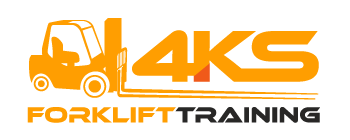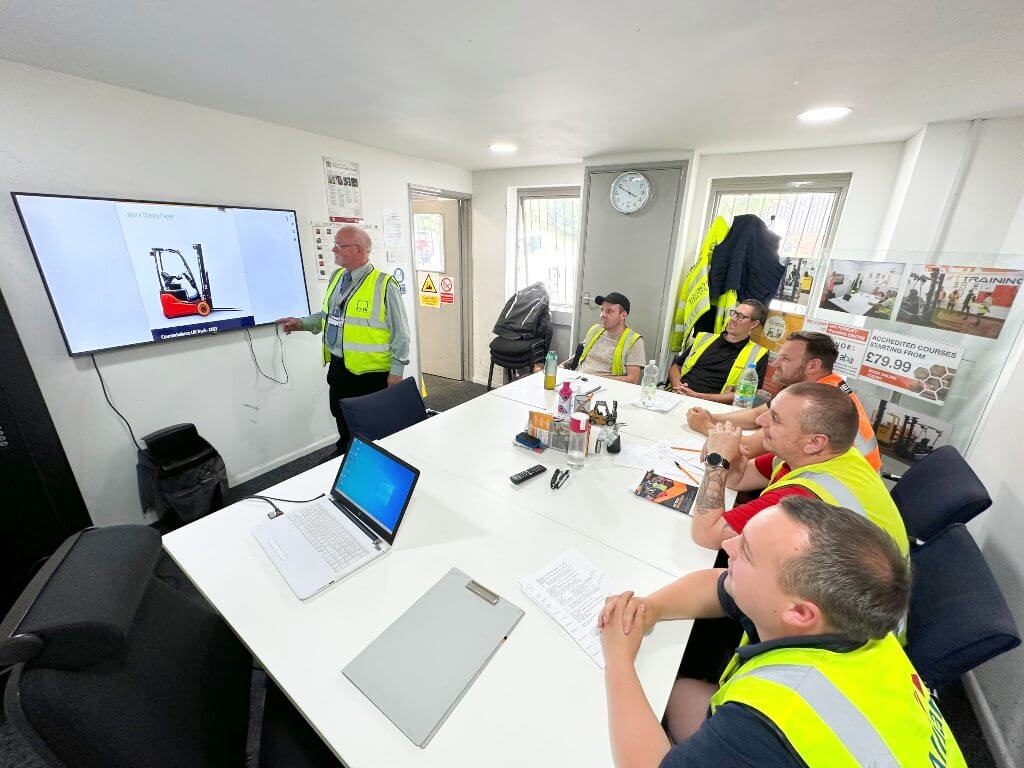How to mount and dismount a forklift truck
How to mount a Counterbalance forklift truck
In this online Forklift Training video, our instructor demonstrates how to mount a counterbalance forklift truck using the correct hand and foot holds. This is another part of the training course to show students how to operate a forklift truck. See our Novice Counterbalance Forklift Training Course to book your session today.
Mounting the forklift truck
- Check the environment and the floor around the truck. Debris and uneven surfaces can cause slips and trips. Also, be aware of other vehicles, pedestrians and even existing loads on the forks.
- Check the truck’s state of repair and consider how this may affect mounting and dismounting. For example, do you need to take extra care due to erosion on non-slip surfaces?
- Face the truck when getting on and off. If steps are available they should be used. Good secure hand and foot holds should be established. Always maintain three points of contact with the truck when mounting/dismounting for stability.
- Be aware that loose or bulky clothing, such as overalls, can catch when getting on and off the truck.
Once you’re in the cab
- Adopt the correct operating position by using all of the available adjustments. This is important for both safety and ergonomics. The seat, steering column and armrests should never be adjusted when travelling.
- Sit down in the seat, lean forward and shift hips to the back of the seat to set the spine in correct alignment. Adjust the seat by sliding it forwards so your feet are resting comfortably and the pedals are within easy reach
- Raise the seat to a comfortable height, checking for adequate head clearance and maximum vision – ensure that pedals are still within easy reach. Ensure the weight limit setting is correctly adjusted
- Adjust the steering wheel so that the steering assistor is within easy reach of either hand at the furthest point away from the body – the aim is to eliminate the need to lean forward. Adjust the backrest to a position slightly tilted backwards to avoid excessive bending of the head and neck
- If a safety belt is available it should be worn. Seatbelts are a legal requirement on most trucks since 2002 and for older trucks with any risk of overturning, operator restraining systems should be installed.
- Make sure mirrors are adjusted as required. Make sure all areas of the body are within the operator’s cabin before the truck starts moving.
This video shows the driver fully understands the importance of observation. Using the correct hands to steer. Having full control of the truck using his front wheel centre point as his pivot point on every turn.
How to Dismount a counterbalance forklift truck
Dismounting the forklift truck
- Have a look left and right. Look down onto the floor to make sure you’re not stepping into any mud, dirt or oil.
- Put your left hand onto the bar and your right hand onto the back of the operator’s seat.
- Step down using your right leg bringing yourself out facing the truck.
- Ideally find an even surface for dismount as landing awkwardly can result in injuries. Floor debris or spillages in the area of dismounting could also lead to slips and falls. Of course, check for other traffic before exiting the cab.
- Never jump down from the truck. Three points of contact should be maintained during dismount for stability and to protect from musculoskeletal injury.





